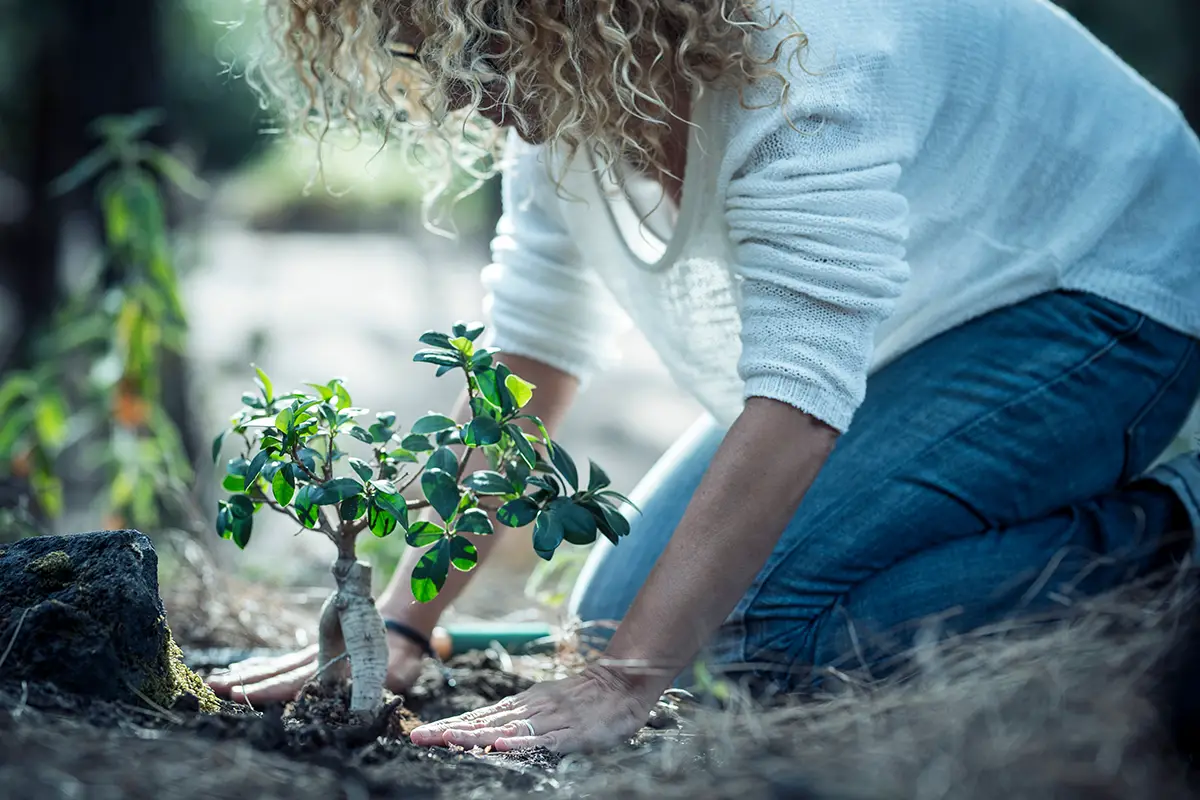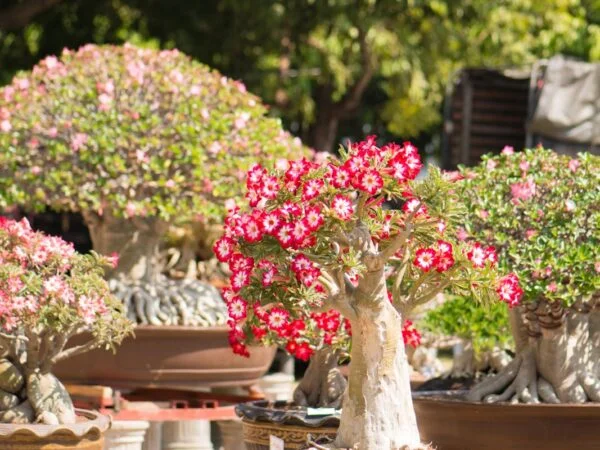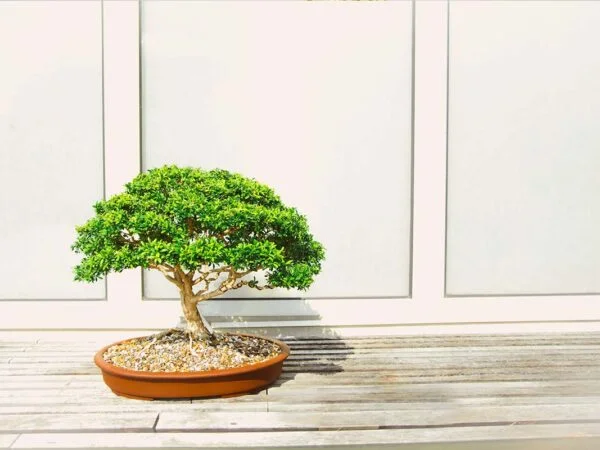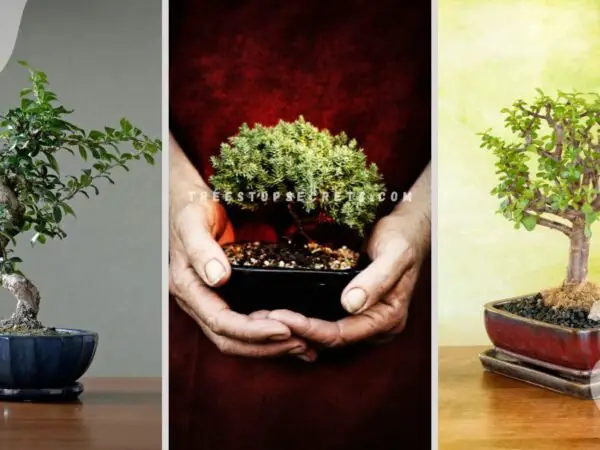When you hear the word "bonsai," you might think of small, meticulously pruned trees that resemble miniature versions of their larger counterparts. But there's more to bonsai than just its appearance. The term "bonsai" comes from the Japanese words "bon" (tray) and "sai" (planting). It symbolizes a harmonious relationship between nature, humans, and art. Understanding the meaning behind bonsai can deepen your appreciation for this ancient practice and the beautiful trees it produces.
What Does Bonsai Mean?
The word 'Bonsai' is Japanese, but the art itself has roots in the ancient practices of the Chinese empire, known as 'pun-sai,' dating back to around 700 AD. This technique involved growing dwarf trees in containers using special cultivation methods. Over time, the concept evolved, and by the 6th century, Japanese imperial officials and Buddhist students began to visit China. They returned home with various souvenirs, including these intriguing container plantings.
The adoption of bonsai in Japan occurred during the Kamakura period when the Japanese began to embrace the art of growing trees in containers. This adaptation was influenced by Zen Buddhism, which emphasized harmony with nature, and reflected Japan's geographical limitations compared to mainland China (Bonsai Empire).
The term 'Bonsai' itself was established in Japan around the year 1800. It was used to distinguish these dwarf trees from ordinary hachi-no-ki, marking a shift towards a more horticultural design approach rather than a purely religious or mythical interpretation.
The Evolution of the Art
Over the centuries, bonsai has transformed into a beloved art form, integrating various cultural influences and artistic expressions. As I explored the world of bonsai, I found that this practice has now reached a global audience. There are more than fourteen hundred books on bonsai and related arts available in at least twenty-eight languages, spread across over one hundred and ten countries and territories.
This widespread interest has made bonsai not just a hobby but a community. Enthusiasts and artists share techniques, styles, and philosophies, fostering a deeper understanding and appreciation for this intricate art form. The evolution of bonsai is a testament to its enduring appeal and the creativity of those who engage with it.
Elaboration on the Definition
The essence of bonsai lies in its philosophy. It’s about creating a harmonious balance between nature and human artistry. Bonsai artists carefully prune, shape, and nurture the trees to reflect a balance between simplicity, natural beauty, and human intervention. This practice is not just about growing small trees; it's about cultivating a deeper connection with nature and fostering patience and mindfulness in those who care for these living artworks.
Specific Examples
-
Traditional Bonsai Styles: There are various styles in bonsai, such as the formal upright (Chokkan), informal upright (Moyogi), slanting (Shakkan), and cascade (Kengai). Each style reflects different aspects of nature and requires specific techniques to achieve the desired look.
-
Cultural Significance: In Japanese culture, bonsai is seen as a symbol of patience, harmony, and the eternal cycle of life. For instance, during celebrations, bonsai trees are often given as gifts to convey wishes for good fortune and long life.
- Observe Real Trees: Before starting with bonsai, study the natural growth patterns of full-sized trees. This will help you understand how to mimic these shapes on a smaller scale.
- Start Small: Begin with a basic bonsai tree, like a juniper or ficus, which are easier for beginners to maintain and shape.
- Learn Patience: Bonsai cultivation is a slow process that requires years of careful attention. Embrace this slow pace as part of the practice's meditative nature.
Table: Bonsai Styles and Their Meanings
| Bonsai Style | Description | Symbolic Meaning |
|---|---|---|
| Formal Upright | A straight trunk with balanced branches, mimicking a tree in calm conditions. | Strength, resilience |
| Informal Upright | A trunk with gentle curves, resembling trees that bend in the wind. | Flexibility, adaptability |
| Slanting | A trunk that slants at an angle, as if shaped by wind. | Endurance, overcoming adversity |
| Cascade | A trunk that cascades down below the container, like a tree on a cliff. | Persistence, overcoming obstacles |
Cultural Significance
Bonsai is not just a gardening technique; it is deeply embedded in cultural and spiritual practices, particularly in Zen Buddhism and Japanese traditions. This section explores these influences and their significance.
Influence of Zen Buddhism
The art of bonsai has roots that intertwine with the principles of Zen Buddhism. During the Kamakura period, Japan adopted the practice of cultivating trees in containers from China. This adaptation was influenced by Zen philosophies, which emphasize simplicity, patience, and harmony with nature (Bonsai Empire). The process of nurturing a bonsai tree reflects the Zen mindset, encouraging practitioners to find tranquility and mindfulness through their care of the miniature trees.
The meticulous attention required in bonsai cultivation aligns with Zen practices of meditation and focus, allowing enthusiasts to engage in a form of active meditation while tending to their trees. This connection to Zen not only enhances the aesthetic aspect of bonsai but also enriches the spiritual experience for those who practice it.
Bonsai in Japanese Tradition
In Japan, bonsai has evolved into an art form that resonates with the cultural identity of the nation. The Japanese have refined the practice, developing it along lines that reflect their unique aesthetics and sensibilities (Bonsai Empire). Bonsai is considered a proud part of Japan's traditional culture and plastic arts, embodying the essence of nature in a way that is accessible and personal.
Bonsai enthusiasts in Japan appreciate the distinct characteristics of this art form, which have been shaped by historical and cultural influences. The limited size of Japan compared to mainland China has also played a role in how bonsai is perceived and cultivated, leading to a focus on creating forms that harmonize with the Japanese landscape.
| Cultural Aspect | Influence |
|---|---|
| Zen Philosophy | Simplicity, patience, harmony |
| Japanese Aesthetics | Balance, nature, accessibility |
| Historical Context | Adaptation from China |
Through my personal experience, I've come to understand that bonsai serves as both a creative outlet and a connection to tradition. It represents a way to appreciate nature's beauty while also engaging in a practice that fosters mindfulness and reflection.
Types of Bonsai Techniques
Bonsai is a captivating art form that involves not only the cultivation of trees but also their creative styling. In my journey with bonsai, I have learned that mastering the techniques of cultivation and styling is essential for creating beautiful miniature trees.
Cultivation Methods
Cultivation is the foundation of bonsai and involves selecting a tree species that suits my climate and growing conditions. It is crucial to choose a species that can thrive in a confined space, as bonsai trees are typically grown in small pots. There are several key considerations in cultivation:
| Consideration | Details |
|---|---|
| Tree Species | Must be perennial, woody-stemmed, and able to produce true branches. Popular choices include pines, maples, and junipers. (Wikipedia) |
| Climate Adaptability | The selected tree must be appropriate for the local climate to ensure healthy growth. |
| Pot Size | The pot must be small enough to restrict root growth, promoting a miniature form. |
| Pruning | Regular crown and root pruning is necessary to maintain size and shape. |
In my experience, understanding these aspects of cultivation can lead to a thriving bonsai that reflects my personal style.
Styling Approaches
Once the bonsai is cultivated, styling becomes a creative endeavor. Styling involves training and shaping the tree to resemble natural forms closely. This process includes various techniques such as pruning, wiring, and selecting pots. Key styling approaches include:
| Technique | Description |
|---|---|
| Pruning | Removing dead wood and shaping branches to create a balanced appearance (Quora). |
| Wiring | Using wire to bend and position branches into desired shapes, allowing for artistic expression. |
| Choosing the Front Side | Deciding which side of the tree will be the front, which affects the overall aesthetic. |
| Pot Selection | Picking a suitable bonsai pot that complements the tree's style and enhances its visual appeal. |
Through these techniques, I have learned to create bonsai that not only fits my vision but also pays homage to the beauty of nature. Each tree tells a unique story, shaped by my hands and the techniques I employ.
Care and Maintenance
Maintaining the health of my bonsai trees is essential for their growth and longevity. Two critical aspects of care are watering practices and fertilization.
Watering Practices
Bonsai trees require regular watering to thrive. However, it's important to ensure that I do not over-water, as this can lead to root rot. Selecting the right soil mixture is crucial, as it impacts water retention and drainage. I find that repotting bonsai trees regularly helps maintain a healthy root environment, allowing for proper water absorption by the soil (Bonsai Empire).
To establish effective watering practices, I follow these guidelines:
| Watering Aspect | Recommendation |
|---|---|
| Frequency | Water when the topsoil feels dry to the touch |
| Amount | Water thoroughly until it drains from the bottom |
| Season | Adjust frequency based on temperature and growth stage |
Fertilization Importance
Fertilization is vital for bonsai trees due to their small pots, which limit nutrient availability. I make it a point to fertilize my trees regularly during the growing season to ensure they remain healthy and continue to thrive.
To optimize fertilization, I consider the following:
| Fertilization Aspect | Recommendation |
|---|---|
| Timing | Fertilize when signs of new growth appear, typically in spring (Quora) |
| Type | Use a balanced fertilizer suitable for bonsai |
| Frequency | Fertilize every 4-6 weeks during the growing season |
By adhering to these watering and fertilization practices, I ensure that my bonsai trees remain healthy and vibrant throughout the year.
Popular Tree Species
Choosing the right tree species is a vital step in the bonsai journey. I have learned that not all trees are suitable for bonsai, and some species thrive better than others in this art form. The ideal bonsai tree needs to have characteristics that allow it to be shaped and maintained in a compact form while still retaining its natural beauty.
Choosing the Right Tree
When selecting a tree for bonsai, it is essential to consider factors such as the tree's growth habits, leaf size, and hardiness. I find that the best choices are typically perennial woody-stemmed trees or shrubs that produce true branches and can be kept small through pot confinement and pruning.
| Factor | Description |
|---|---|
| Growth Habit | Look for species that have a natural tendency to branch out. |
| Leaf Size | Smaller leaves are preferable for maintaining the compact visual appeal of bonsai. |
| Hardiness | Choose species that can adapt to your local climate conditions. |
Common Bonsai Varieties
Several tree species are particularly popular for bonsai cultivation due to their favorable characteristics. Here are some common varieties that I have come across in my experience:
| Bonsai Variety | Characteristics |
|---|---|
| Ficus (Ficus retusa) | Tolerates indoor conditions; small leaves; strong trunk. |
| Juniper (Juniperus spp.) | Hardy and adaptable; great for outdoor bonsai; needle-like leaves. |
| Pine (Pinus spp.) | Aged-looking bark; retains compact shape; prefers outdoor settings. |
| Chinese Elm (Ulmus parvifolia) | Fast growth; small leaves; adapts well to various climates. |
| Maple (Acer spp.) | Beautiful fall colors; delicate leaves; needs outdoor care. |
According to the information, bonsai can be created from almost any perennial woody-stemmed tree or shrub species that can be cultivated to remain small through pot confinement with crown and root pruning (Wikipedia). However, I have found that certain species stand out due to their aesthetic appeal and ease of care.
It is essential to remember that while some bonsai trees may be displayed indoors for short periods, they should primarily be kept outdoors to thrive and require at least five hours of sunlight daily along with good ventilation.
Global Impact
Bonsai in Western Culture
Bonsai made its way to the West in the late 19th century. The first book about Japanese dwarf trees was published in European languages in 1902, and the first English book followed in 1940. Since then, the popularity of bonsai has grown significantly, reaching a diverse audience across various cultures.
The spread of bonsai techniques and knowledge was facilitated by visiting teachers and passionate enthusiasts who shared their insights. Today, bonsai is enjoyed not only as an art form but also as a form of meditation and a rewarding hobby. It is primarily cultivated for contemplation and as a testament to the grower's effort and creativity rather than for food production or medicinal purposes.
As of now, there are over 1,400 books on bonsai and related arts available in at least 28 languages across more than 110 countries and territories. The community is thriving, with around 100,000 members in various bonsai clubs and associations worldwide, along with an estimated five million unassociated hobbyists.
| Year | Significant Event |
|---|---|
| 1902 | First European language book on bonsai published |
| 1940 | First English book on bonsai published |
| 2023 | Over 1,400 bonsai books published in 28 languages |
Community and Resources
The bonsai community has flourished globally, providing numerous resources for enthusiasts. With a growing number of clubs and societies, individuals can connect with others who share their passion for bonsai cultivation. These organizations often host workshops, exhibitions, and competitions, allowing members to learn and showcase their skills.
In addition to local clubs, online communities have emerged, offering forums and social media groups where bonsai lovers can share tips, experiences, and photographs of their trees. Resources such as instructional videos, articles, and books further support the learning journey for both beginners and experienced practitioners.
Overall, the global impact of bonsai is evident through its widespread appreciation and the robust community that continues to nurture this ancient art form. The exchange of knowledge and techniques among enthusiasts ensures that bonsai remains a vibrant and evolving practice, enriching the lives of many around the world.
Final Thoughts: What Does Bonsai Mean?
Understanding what bonsai truly means goes beyond just knowing its definition. It's about appreciating the blend of nature and human artistry and embracing the patience, care, and mindfulness required to cultivate these beautiful trees. Whether you're new to bonsai or a seasoned practitioner, remember that each tree you shape is a reflection of your personal journey and connection with nature.
FAQs About "What Does Bonsai Mean?"
Q: What is the origin of the word "bonsai"?
A: The word "bonsai" is of Japanese origin, derived from the words "bon" (meaning tray or pot) and "sai" (meaning planting). It literally means "planted in a tray." This term reflects the practice of growing small trees in containers, which originated in China and later developed into a distinct art form in Japan.
Q: Why is bonsai considered an art form?
A: Bonsai is considered an art form because it involves creativity, aesthetic judgment, and meticulous craftsmanship. The practice requires shaping and nurturing a tree over many years to create a miniature version of a mature tree in nature. Just like painting or sculpture, bonsai reflects the artist's vision, patience, and skill, making it a living piece of art.
Q: What are the main styles of bonsai, and what do they represent?
A: There are several main styles of bonsai, each representing different aspects of nature:
- Formal Upright (Chokkan): Symbolizes strength and resilience.
- Informal Upright (Moyogi): Represents flexibility and adaptability.
- Slanting (Shakkan): Reflects endurance and the ability to overcome adversity.
- Cascade (Kengai): Suggests persistence and the spirit of overcoming obstacles.
Q: How does bonsai symbolize patience and mindfulness?
A: Bonsai symbolizes patience and mindfulness because the process of cultivating a bonsai tree is slow and requires consistent care and attention over many years. It teaches practitioners to focus on the present moment, appreciate small changes, and understand that growth and development take time. This mindful practice fosters a deeper connection with nature and a sense of inner calm.
Q: What should beginners know before starting with bonsai?
A: Beginners should know that bonsai requires patience, a willingness to learn, and a commitment to long-term care. Start with a beginner-friendly species like juniper or ficus, learn about the specific needs of the tree (such as watering, pruning, and repotting), and take time to understand the fundamental techniques. Joining a local bonsai club or finding a mentor can also provide valuable guidance and support.
Q: Can bonsai be more than just a hobby?
A: Yes, bonsai can be much more than just a hobby. For many, it becomes a form of meditation and a way to connect with nature. Some enthusiasts also see it as a spiritual practice that fosters discipline, patience, and mindfulness. Additionally, bonsai can be a meaningful gift symbolizing good fortune, harmony, and balance in life.
Image Source: Paid image from CANVA





